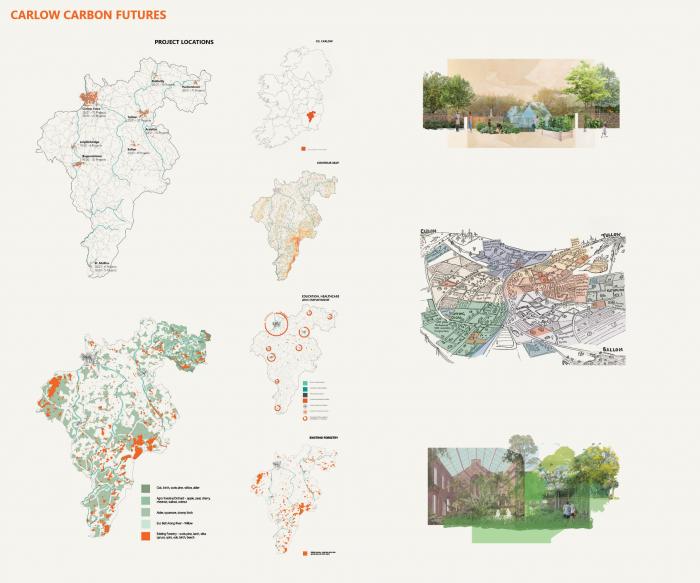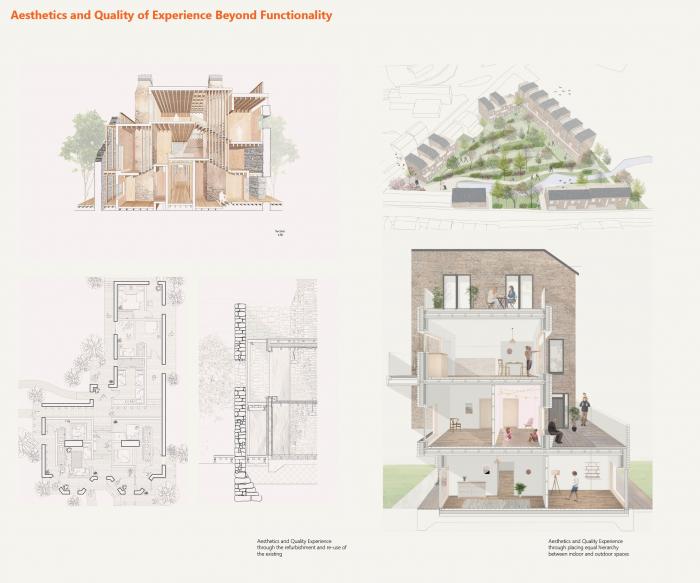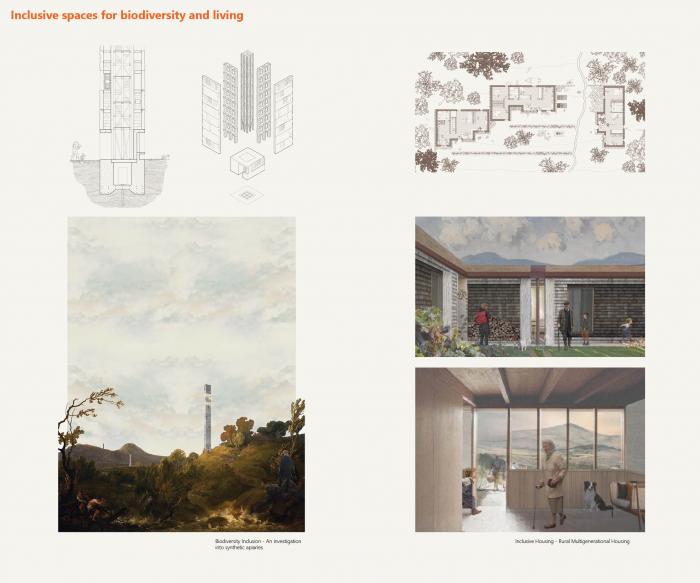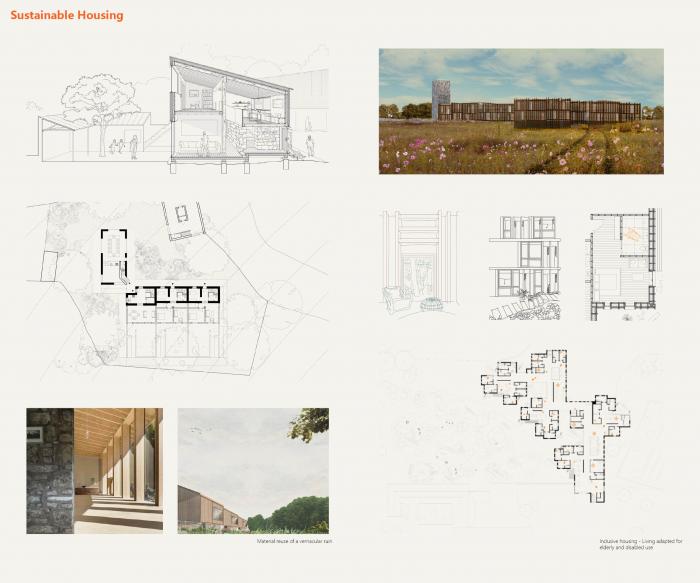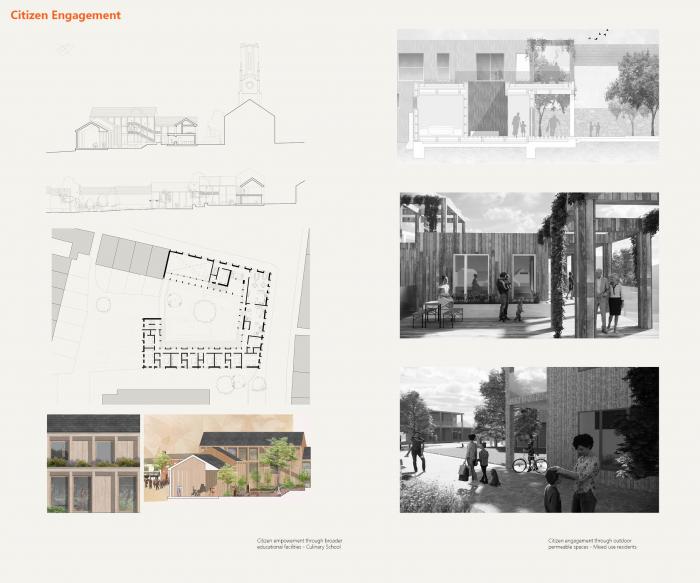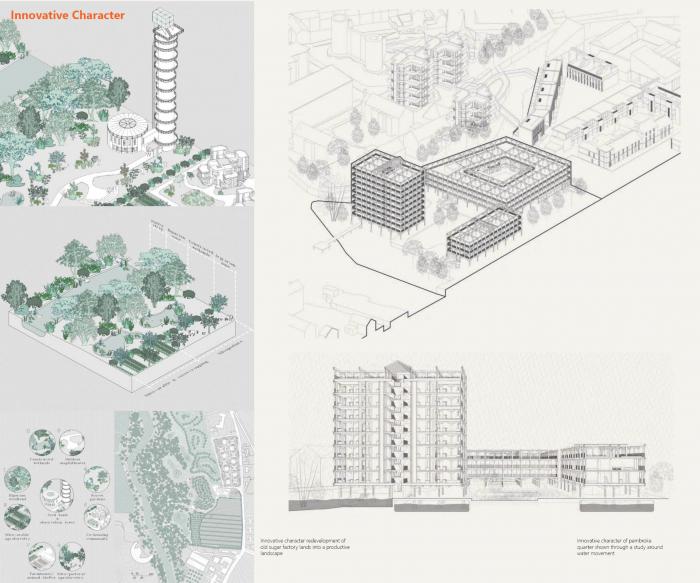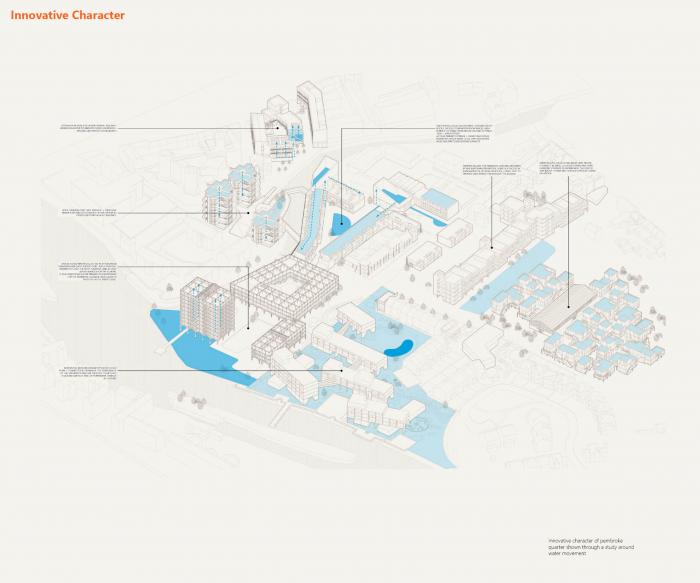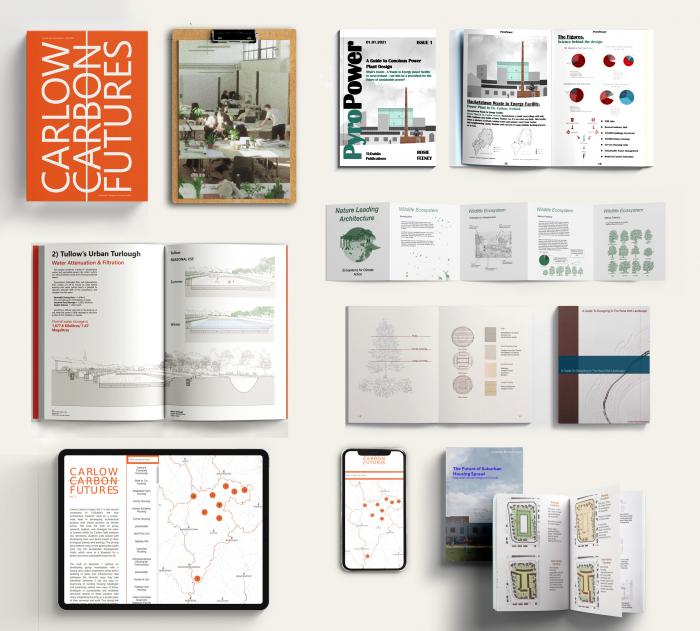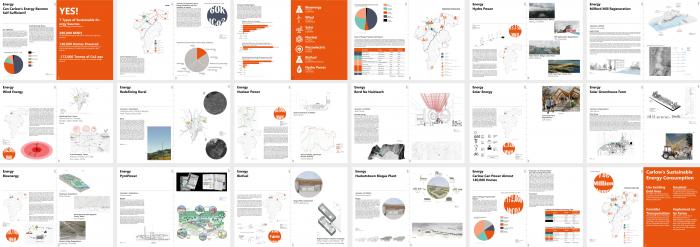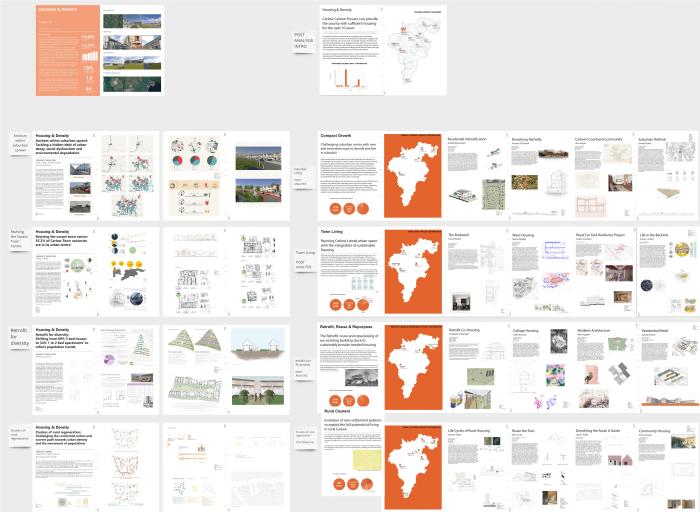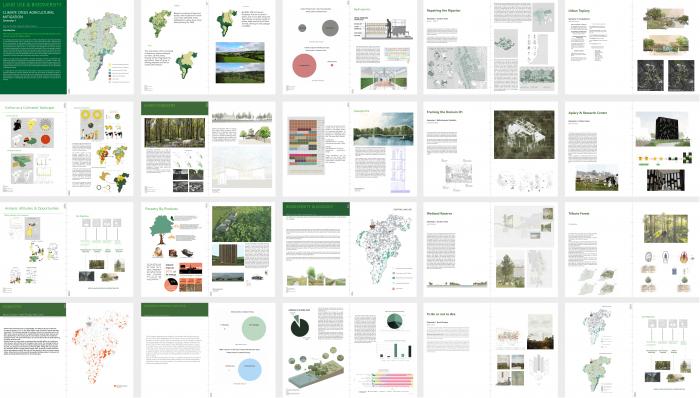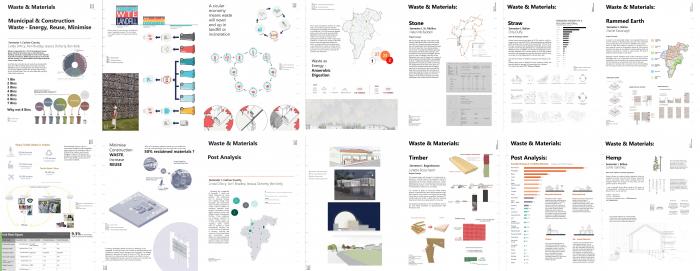I. SUMMARY INFORMATION
Project
269006
Status
Submitted
Award category
Solutions for the co-evolution of built environment and nature
You want to submit
NEW EUROPEAN BAUHAUS RISING STARS : concepts or ideas submitted by young talents (aged 30 or less)
Project title
Carlow Carbon Futures
Full concept/idea title
Regional Regeneration through Collaborative Design
Description
‘Carlow Carbon Futures’ is the culmination of an expansive two-year speculative research project undertaken by an architectural design collective of 130 TU Dublin students and academics producing 400 projects to radically remodel both the built and natural environments of County Carlow, Ireland.
Where is your concept/idea being developed or intended to be implemented in the EU?
Ireland
Carlow
Carlow County
Carlow Town
R93 A3K1
II. DESCRIPTION OF THE PROJECT
Please provide a summary of your concept/ idea
‘Carlow Carbon Futures’ is the culmination of an expansive two-year speculative research project undertaken by an architectural design collective of 130 TUDublin students and academics producing 400 projects to radically remodel both the built and natural environments of County Carlow, a landlocked 897 km² region of central Ireland. Carlow’s population is circa 57,000 people. Our pioneering concept is to transform and re-develop the region which is currently in decline and regenerate it through a series of innovative positive community-based projects, streaked with radical thought, creative solutions, and regenerative experimentation founded on principles of sustainability and a philosophy of climate-literate design which permeates each intervention.
We have taken on the regeneration of Carlow through a sustainable approach to the built environment and protection of nature, with a carbon budget which is based in fact and credible in solutions. Our optimistic act of positive change demonstrates a body of work, suitable for a variety of multidisciplinary categories. We conceptually replaced Carlow’s dependency on finite energy and made it completely self-sufficient by 2050 using green energy and a variety of innovative production methods; wind turbines, hydroelectricity, widespread photovoltaic panels, and waste-produced biochar energy. This clean energy provides a carbon reduction of 170,000MtCo2 by 2050. The societal and environmental challenges we face can only be tackled through proactive collaborative efforts, a serious commitment to understanding the real consequences of our design decisions, and an ability to be flexible and agile in our approach.
‘Carlow Carbon Futures’ is a road map to understanding our history of environmental anthropogenic abuse causing the climate crisis and a vision of a healthier brighter future.
Please give information about the key objectives of your concept/idea in terms of sustainability and how these would be met
This project’s design collective produced 400 projects under the headings; energy, housing and density, water and flooding, transport, industry and employment, land use and biodiversity, education, agriculture and forestry, waste, and materials. The primary objective was to address many environmental issues through radical sustainable solutions, generating an ambitious redevelopment model for regions of the country. The project generated climate literate designs centered around the specific goal of a projected simultaneous evolution of the built and natural environments.
Our results and impacts have been measured through a standard carbon measurement and then varied across project type. As an overview of the major impacts of our projects, we calculated: 8 floodwater mitigation projects which accumulate, redirect and store over 6.49 megalitres of water for regional use, 3 River hydroelectric power stations to generate 9678 MWh/yr of power, the new required 2,364 nZEB homes in Carlow, a network of 225km of eco-bicycle paths was created and a regeneration of a 78km of electric high-speed train line across the county was developed. A projected 3,500 tonnes of Co2 could be saved by the predicted 970 new students in eco-centric schools. We envision 45% of Carlow to be forested by 2040 for an eco-belt along the river consisting mostly of native trees, facilitating the passage of wildlife and agroforestry while sequestering 162 million kgs of Co2 per year.
This model can be rolled out across any region to combat climate change and strive for an optimistic sustainable future. We can no longer afford to think short term if we are to envision long term existence. Nor can we ignore ecological disaster such as flooding and damaged riparian. The ‘Carlow Carbon Futures’ model faces these challenges through infrastructure, radical new housing models, and making sustainability a cultural habit through the co-evolution of the built environment and nature.
Please give information about the key objectives of your concept/idea in terms of aesthetics and quality of experience beyond functionality and how these would be met
Carlow Carbon Futures aims to propose beautiful and generous solutions which are born out of a careful analysis, spatially focused evidence and research we gathered. We worked at a range of territorial, landscape, and human scales in the interest of building visually impactful sustainable, inclusive places to live together post pandemic. Our conversations and ambitions hope to shape the visual identity of tomorrow.
In understanding our overarching aim to provide solutions for the co-evolution of built and natural environments, the realm of aesthetics and quality of experience in architectural interventions is fundamental. This vast body of design work described through drawings, models, images and research data a zero-carbon future for a climate crisis resilient county. Articulating how this future might manifest is a serious spatial challenge, to which we’ve responded with both imagination and rigour. Changes that transform our relationship to fossil fuels and reduce our carbon emissions will inevitably have spatial consequences for the future. As architects and future architects, we have questioned the preconceived notions of green-washing and sustainability to a truer climate literate version of the future.
Visually, this manifests in the redevelopment of the pre-existing urban and rural conditions through modern technologies, innovative materiality, and craft. From sympathetic local materials used to densify rural town centres to innovative timber technologies employed on urban scales.
Carlow is a patchwork landscape with thousands of years of human impact - fluctuating between intensive use and abandonment. The deep scars left by centuries of turf-cutting, the ruins of former homes, railway track remains in various states of visibility and the myriad of field walls enclosing areas of dense flora across the slopes are testament to this. Our vision is for a thriving landscape integrated with the daily life of its inhabitants and the built environment.
Please give information about the key objectives of your concept/idea in terms of inclusion and how these would be been met
Architecture and design aim to foster an inclusive approach to the design and construction of the built environment. We took this directive further to achieve inclusion through an over-arching adopted philosophy to design for aesthetics, quality of experience, and functionality which harmonize both in the built environment and the natural one which facilitates it.
In terms of the inclusion and reintroduction of biodiversity into the landscape of Carlow a series of exciting and radical projects were carried out. A response across the two years of work surrounding land-use, biodiversity and its role in the built environment is based on accepting that nature needs a helping hand: our regenerative design can be proactive and accept that not all ecosystems can right themselves, nor have the luxury of time to do so. In this sense, a vast majority of our work has centered on proactive approaches to climate care and land stewardship. From reforestation, modern artificial farming methods, the promotion and protection of specific flora and fauna as well as some broader conceptual schemes of bringing natural life into cities, towns, and everyday lives. Our approach to housing was to create cohesive inclusive communities in urban or rural environments. The inclusion and redevelopment of the counties’ existing historical fabric was a key starting point in establishing sustainable housing typologies. A primacy was placed upon densifying urban and rural town centres through innovative inclusive models such as socially-integrated elderly housing for an aging population, multigenerational typologies in both urban and rural agricultural contexts, emergency accommodation for climate refugees, and direct provision centres for asylum seekers. Our aim was for an inclusive built environment regardless of age, disability, social, economic, or cultural background.
Please explain the innovative character of your concept/ idea
The level of collaboration achieved on such a large scale is one of its most innovative aspects. Not only was each student’s project grounded in an eco-centric approach to design, but emphasis was placed constructing systems of interdependence and symbiosis. Groups dealt with issues of waste, water, biodiversity loss, with each student proposing an intervention that sat as a puzzle piece in a greater picture. Networks of public transport and cycle infrastructure which both new and old settlements depended on, were imagined and co-ops that provided fresh local produce and employment to communities were envisaged. Each site was associated with a unique specific scheme and that projects from year one and two did not overlap.
Once the models for the revitalised towns and villages were created, the individual projects were documented in the form of webpages which can be accessed through exploring an interactive map at Carlowcarbonfutures.ie. Two volumes of the publications ‘Carlow Carbon Futures’ have been released covering the research, strategies and carbon metrics of the proposed interventions. The dissemination of the second volume is underway.
Another innovative aspect of the project has been our continuous open dialogue locally, culturally, and politically with the citizens as well as the authorities of Carlow county. In the cultural realm, we have been in constant contact and collaboration with VISUAL Carlow, one of the key pillars of Irish contemporary art and visual culture. This relationship has spanned two years, culminating in the shared curated exhibition of our project back to the people of Carlow. On a civil and societal level, we engaged with the Carlow County Council through the county architect to create ambitious regenerative development plans for the county as well as remodelled radical Local Area Plans for proactive change on the individual, town, and landscape scales.
Please detail the plans you have for the further development, promotion and/or implementation of your concept/idea, with a particular attention to the initiatives to be taken before May 2022
The Carlow Carbon Futures initiative is presented as a prototype guide of sustainable regional development. The website is a database of proposed projects and strategies that can be accessed by the public and academia at carlowcarbonfutures.ie. With TU Dublin’s climactive studio projects online source growing the interactive map can be expanded to include other areas across Ireland. The last two years of analysis, creativity and critical thought have been captured in a combined volume of individual written and visualised Manifestos. These are to kickstart a global active dialogue.
We understand the importance of ensuring that this project transcends the realm of architects and planners, and makes its way into the lives of people who are not familiar with architectural terminology or complex construction details but care about environmental degradation and want to see local and global change in the relationship between the built and natural environment. We hope that this can be achieved through the upcoming exhibition of our work at VISUAL Carlow, where people from the region will have the opportunity to view and comment on our vision for their county’s future. As well as the conversation the exhibition can foster, we are making ourselves available through online mediums such as Instagram where we have prepared to release weekly insights to students’ work leading up to the launch of the website. The constraints of COVID shaped and enriched the project as it shifted our approach towards widespread online dissemination in the form of websites, Instagram, and twitter (@CarlowCarbonFutures), ultimately allowing us to reach a far wider audience.
We envisage this project ‘Carlow Carbon Futures’ as having a specific timescale. The dissemination and engagement activities will take place within the timescale of the next academic session with the aim of completing by May 2022.
III. UPLOAD PICTURES
IV. VALIDATION
By ticking this box, you declare that all the information provided in this form is factually correct, that the proposed concept/idea has not been proposed for the New European Bauhaus Rising Stars Awards more than once in the same category.
Yes
